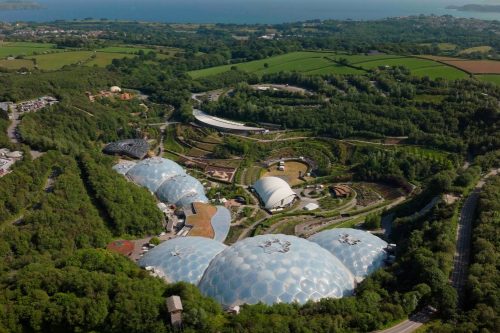Cornwall states its case in the dash for net zero power

A campaign has been launched to promote Cornwall’s vital role in the UK’s dash for net zero power.
‘The Power of Cornwall’ showcases the far South West as a green energy powerhouse, capable of driving the UK’s energy transition through its abundance of critical minerals like lithium and tin, offshore wind resources, geothermal energy and pioneering biofuels.
The campaign, which includes a short film featuring and narrated by broadcaster and journalist, Simon Reeve, has been devised by Cornwall Trade and Investment (CTI), which promotes the county as a business destination.
The campaign highlights Cornwall’s abundant natural resources and the investment opportunity it presents in the move away from fossil fuels, and the potential to transform Cornwall’s economy.
CTI director Nicola Lloyd said: “We want to open people’s eyes to the scale of opportunity that exists in Cornwall to support the energy transition, using our natural capital to power the nation and create quality local jobs.”
The campaign is also backed by the business-led Cornwall and Isles of Scilly Local Enterprise Partnership.
Chief executive Glenn Caplin-Grey said: “Billions of pounds of investment is flowing into green technologies and the energy transition. Cornwall is starting to reap that investment because we have some of the best natural resources in Europe, including offshore wind and the granite beneath our feet. But we want to attract more.”
The Power of Cornwall campaign will run through the summer and includes a series of investment films highlighting different sector opportunities, an investment prospectus, digital billboards across key commuter routes in London and national editorial pieces aimed at potential investors.
Opportunities and examples of renewable energy projects in Cornwall highlighted by the campaign include:
- Floating offshore wind
- The Celtic Sea off Cornwall’s coast is earmarked by The Crown Estate for 4GW of floating offshore wind power by 2035, enough to power three million homes, with a further 20GW planned by 2045. For comparison, Hinkley Point C nuclear power station will be 3.2GW when complete.
- It is estimated 70% of the UK’s grid needs could be met by the potential resources in the Celtic Sea zones around Cornwall alone.
- The Crown Estate will invite developers to bid for Celtic Sea sites later this year.
- Policymakers are being urged to ensure that power from the Celtic Sea is landed in Cornwall in the first phases of offshore projects to unlock other industries vital to the energy transition, like critical minerals.
- Critical minerals
- Cornwall is featured in the Government’s Critical Minerals Strategy because of its abundance of metals like lithium for electric vehicle batteries and tin for electronics.
- Cornwall has the biggest lithium deposit in the whole of Europe, making it a secure and strategic national resource.
- Cornwall could supply at least 50% of the UK’s lithium demand in 2030 and help avoid looming trade tariffs from stricter Rules of Origin in EU automotive markets.
- Companies like British Lithium and Cornish Lithium are projecting hundreds of new jobs and hundreds of millions of pounds in GVA from sustainable mining operations.
- Cornish Metals, which owns South Crofty, Cornwall’s last working tin mine before it closed 25 years ago, has secured £40m towards restarting tin production by 2026.
- Geothermal energy
- Cornwall sits on the largest heat-producing body of granite in the UK. This geothermal energy can be used to make electricity and heat homes and businesses, and lithium can be extracted from deep underground brines.
- Heating in the UK accounts for 40% of UK carbon emissions.
- A company called Geothermal Engineering Ltd (GEL) aims to produce enough heat and power for 70,000 Cornish homes from a portfolio of projects by 2028.
- GEL is also working on the Langarth Deep Geothermal Heat Network in Truro. The project was recently awarded £22m of Government funding to provide hot water and heating to around 3,800 homes.
- And the Eden Project has just (19th June) switched on what is said to be the UK’s first operational deep geothermal heating system in 37 years. It will heat Eden’s iconic biomes and a new nursery using energy from 5km underground.
- Biomethane
- Agriculture accounts for 21% of Cornwall’s carbon emissions.
- Cornwall Council has been working with a Cornish based company that has developed a way to capture ‘fugitive’ methane from farm slurry on its Council owned and tenanted farms to treat and compress it for use as a fuel.
- This ground-breaking technology has been incorporated into the world’s first slurry-powered (liquid methane) tractor.
- Three Cornwall Council-owned farms now capture fugitive biomethane for use in the Council’s road maintenance vehicles operated by its contractor Cormac. The pilot prevents 16,591 tonnes of carbon dioxide from being released every year.
- A further 77 Council trucks plan to transition to biomethane, and there are 427 dairy farms in Cornwall.









